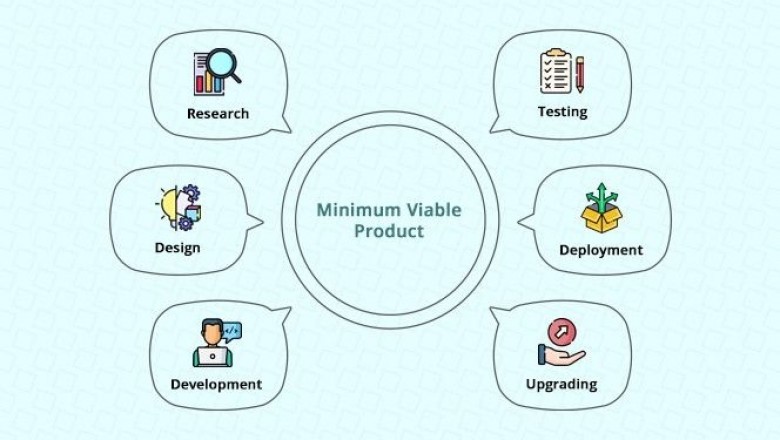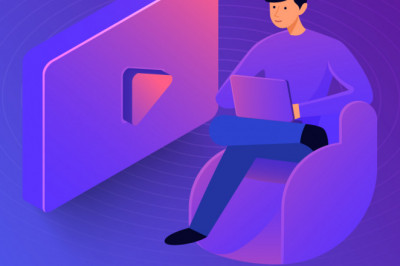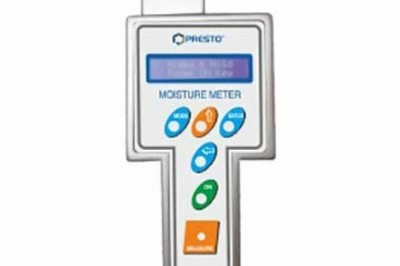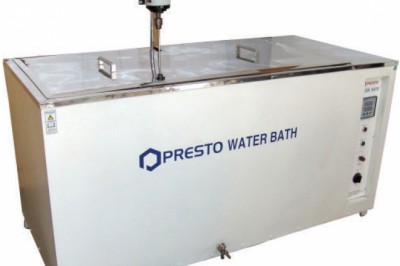views

Complete Guide on Minimum Viable Product
What is the most common way to start with mobile app development?
Research → Design → Development → Testing → Deployment → Maintenance/ Upgrading
This is standard practice when it comes to developing applications. However, over time, businesses have changed their ways of building applications. One of these changed ways is creating a Minimum Viable Product. There are more than six billion mobile devices in the world which are estimated to increase by 2026. This is a huge number when we think about the number of mobile users and the number of applications.
The mobile apps market is also extremely competitive, and if you are thinking of developing an application, you need to have a USP which helps you stand out. Over the years, users' needs have changed immensely, and to keep up with these changing needs, businesses need to define the new model. Hence, MVP came into play. This app development model helps startups and middle and large scale companies develop applications with purpose.
What is the Minimum Viable Product?
Minimum Viable Product acronym as MVP is a basic launchable product that can work for early adopters. It is a basic app with needed features that define its value proposition.
The major aim of building MVP products is to attract early adopters, understand the market, and make an application that fulfills user needs. Once you launch the MVP product, the next step is to take user feedback and re-iterate the app by fixing bugs and adding new features.
Going further, let’s see the benefits of MVP products:
Benefits of MVP Products:
Focus on the Main Objective:
Here, the main focus is to define the core objective of the application. You just need to focus on one idea and solve it. The purpose of the MVP model is to build the right product with a minimum budget. Having a high priority but minimum features can reduce the cost of the products.
Early Testing Opportunities:
When you develop an MVP product, one of the major benefits is that you can test it with the users. It helps you know whether the application fulfills the needs, is it helping users, are features working perfectly, and more. Early testing helps you to make the application better with each iteration.
Gathering Feedback:
When you provide the application to early testers, you get their feedback which helps you to make the application better. Each feedback will help you to make the application better by adding needed features and removing unwanted ones.
Understanding the Market:
When you research the market and develop an application according to its needs, you know the market better and are able to solve real-world problems. When you launch the MVP product and invite early testers, you realize what the people think of your product and ways you can make it better.
Less Development Time:
MVP products take less time to develop an application which means less development cost. This helps businesses to develop applications faster and save money.
Budget Friendly:
MVP apps are budget-friendly as it does not take much investment to develop basic app features. When you start with mobile app development, starting with MVP will help you know the market and users.
Next up, let’s discuss the MVP development process:
MVP Development Process:
Start with Market Research:
The first step you need to do is to carry out market research. Understand the market and your users’ needs. When you do market research, you understand the recent market trends, things your customers need, know your competitors, and understand how they are solving the problems. These things will help you to define the needs of the market.
The first step is to conduct various surveys to know the market’s problems or the current need of the market. This will help you to solve real-world problems. One of the major reasons why startups fail is the lack of research. So, make sure to invest more time in research to understand the market and users better.
Setting up User Persona:
Understanding and defining your users’ persona is important. It will help you understand the product from the users’ perspective and provide them with a better experience with your app’s first iteration. Building a user persona starts from the first step: users opening the application to the last step, i.e., purchasing the products. Define the user’s flow and address the actions users need to take to meet the end goal. Following are the things you need to consider when creating a user persona:
- Identify the Users:
Here you need to define who will use your application, in other words, your target audience. For example: if you are developing an airplane ticket booking application, you have a large user base. Your audience will be end customers who will be booking an application, flight companies who will tie-up with you and share the schedule of their planes. Your target audience will provide you more clarity on what kind of application you need to develop, so it helps them and makes the ticket booking process simpler.
- Identify Users’ Activities:
Here, you will need to define the users’ activities, their touchpoints will help you make the application better. Know how users interact with the application and reach the last stage, i.e., paying for the ticket booking.
Once you know the users’ activities and study them, you will know how to make the application better and make users interact with the application to make a purchase.
- Identify the Story Endings:
Each user will have an end goal, booking a ticket. Identify what things are working to make the users book the flight tickets.
Selecting Technologies:
The next step is to select the technologies you use. There are plenty of options available when you want to develop an application. But, the first thing you need to have is clarity that you are going to develop: an MVP or a fully functional application. If you are going with the former one, i.e., MVP product, choose the flexible and scalable technology. MVP apps will constantly be changing, and it will be easy for your developers to make relevant changes.
You should always choose the technology your team is comfortable with. You need to know the type of architecture you will use. Here is the brief about two types of architecture:
- Microservices:
Microservices architecture carries excellent benefits for MVP development as they are available in small modules which communicate with each other and users. Using modular builds, you can decompose an application into different, more minor services. This makes it easier to understand, develop, test, and make changes in the architecture. Due to functioning modules, multiple autonomous teams can work on development simultaneously, which makes the development fast.
- Monolithic Architecture:
Monolithic architecture helps develop a minimalistic MVP if you plan to develop using a small team, and scalability is not the priority. It is faster to develop and uses lower hardware requirements. The developed application will be self-contained and work independently. Later, if scalability becomes important and your team expands, you can move to microservices.
Developing Features:
Choosing features is crucial; you need to carry out market research and know your users’ necessary features. Here, you will need to verify your concept before moving to product development. When developing any application following are the typical steps:
- Define product requirements
- Assign development tasks
- Decide the features, development, and testing
- Release the product
- Product updates and maintenance
This is a continuous and ongoing process for mobile app development. You will reiterate the process based on your user feedback and their needs.
One of the best examples of this is the app named “Burbn.”
It was a location-based iPhone-only app that allows users to check-in, earn points to hang out with their friends, and share their pictures. Unfortunately, after the initial release, the application was not working correctly, and users were just sharing pictures. So the team decided to remove all the unnecessary features and keep the photo-sharing option. And this application today is “Instagram.” We all know the success of Instagram, and the number of users it has, the number of images, Reels, and Stories shared every day, and the amount of data generated every second.
The key takeaway here is to know your users, understand their needs, and re-iterate accordingly.
Testing:
In this phase, you will need to do user testing and usability testing. The testing phase helps you know whether your app will be used and how users can use your application. These two things will give you more clarity on your application. Generally, before releasing any application, it is expected that it is complete. But that’s not the case with MVP products; the initial release is incomplete; it is expected to at least work flawlessly on any device. So, in MVP products, your aim while testing should be to make it flawless.
Collecting Data:
The main aim of MVP products is to collect user feedback, analyze them, and take necessary actions in the subsequent iterations. Once your application is stable, your next step is to set up the necessary tools to collect users’ feedback. Different measures you need to take to understand your users better, like demographic and behavioral data.
Note: Data collection must be done with users’ consent.
There are three ways you can collect the data from the users:
- Third-party collection services:
There are many ready-to-use tools like Google Analytics, Crazy Egg, Hotjar, etc., which can help you collect useful data for your apps. You can also gather data from the App Store and Play Store for your applications.
Note: Due to EU laws, you won’t use these tools to their full potential in European Union.
- Built-in custom data collection:
You can integrate monitoring features, measure and analyze any element of your product at this stage. You can also keep track of which software features people are using, where and when they are using them. This will help you to know more about your users and make the app better.
- Surveys:
Email and pop-up surveys are a common way to collect information about user satisfaction and recommendations. You can use them to get answers and cannot find them by just monitoring behavior. Remember to not bug your customers all the time with emails and surveys.
Launch:
This is the last step. Here your MVP product is ready to launch, and users can use it. Remember, this is just the first step. You need to iterate the entire development process depending on the feedback you receive from your users.
Going further, let’s discuss the cost of developing MVP products:
Cost of Developing MVP Products:
There are three ways you can develop your MVP products, let’s discuss them in brief:
In house Development:
When planning to start with in-house development, you need to consider plenty of things. First, you need to identify people with unique and different skill sets who can handle pressure and develop applications. There are pros and cons of in-house development as well. You will be responsible for everything from picking the team, assigning tasks, ensuring they are done perfectly, timely deliveries, etc.
Here, the development cost is higher as you will need to invest a lot in hiring people, building the infrastructure, setting up servers, marketing, and plenty of other things.
Outsourced Development:
You can outsource your development to other IT companies like us to help you develop an MVP product from scratch. Established IT companies have a dedicated team of developers, researchers, designers, marketers, testers, system administrators, and sales who can help you with the entire development process. The major benefits of hiring IT companies are timely deliveries and industry-level work.
You don’t need to worry about any technicalities as the companies will help you with everything. They will also help you with deployment and further updates and maintenance of the applications.
Freelance Development:
Many freelance developers can help you with developing an application. But, there are some loopholes here as freelance developers lack experience and will not provide you the complete infrastructure. You will have to deploy the MVP product, get feedback from users, understand them, and reach out to them to make the changes. This entire process includes many back and forth, and there are chances of miscommunication, resulting in the delay of release and making the process complex.
Considering all the factors and depending on your requirements, you can decide where and how you want to develop an application. In my opinion, the best solution is to hire an IT company that can help you with app development and provide the needed infrastructure and resources. If you are looking for an IT company that can help you with ecommerce mobile app development, you can reach out to us.
CTA: Get in Touch with Us
Originally BlogPost Source: Here












